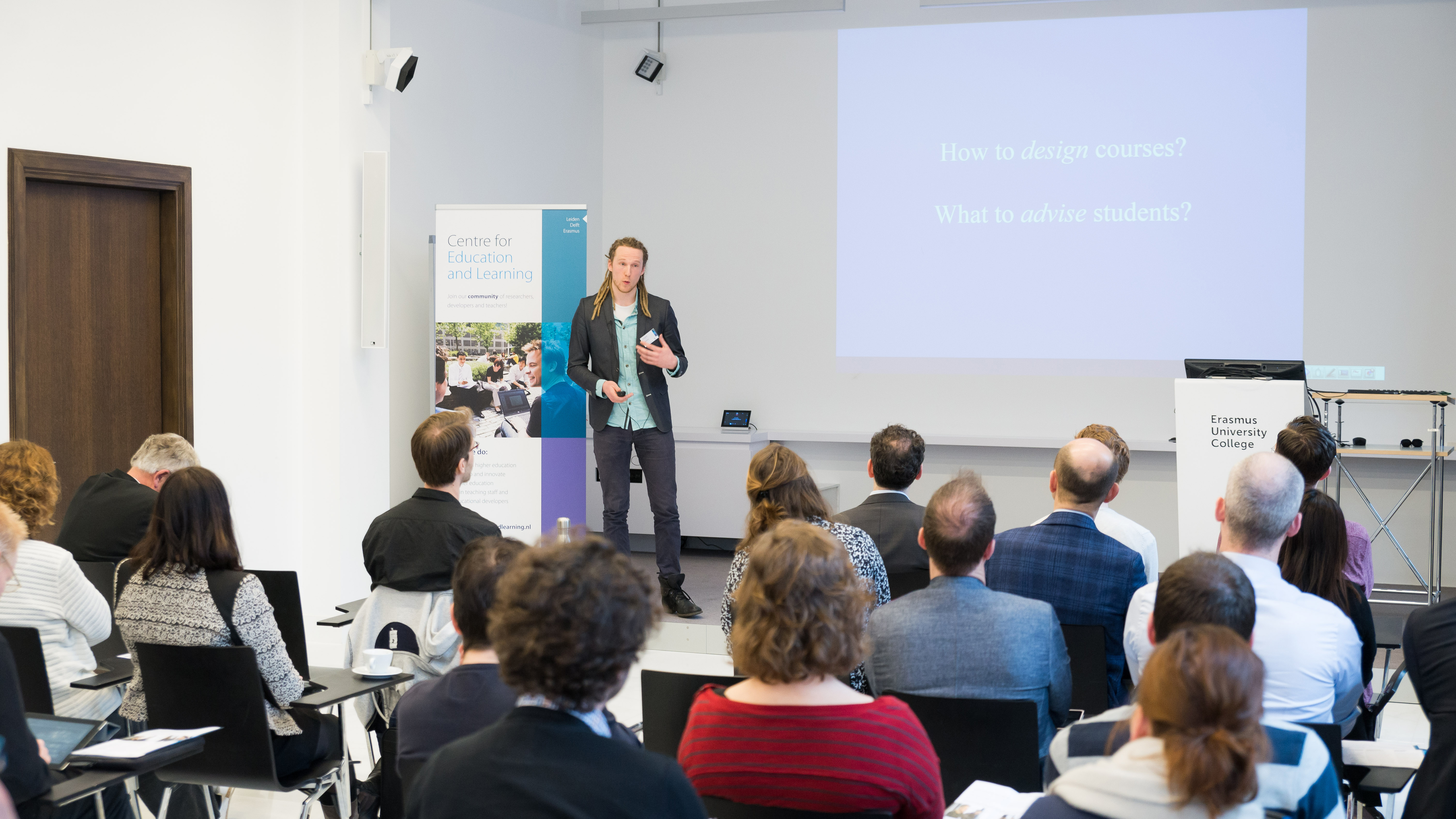Tim van der Zee - Instructional Design Guidelines for Multimedia Materials
Educational videos are generally aimed at increasing learning and multimedia materials should be designed to facilitate that goal as well. Tim van de Zee offers five guidelines based on his research:
1. Multimedia materials should be accompanied by enough explanation and guidance. Don't expose the student to all of the information at once, rather chop the information into different segments and discuss them in a logical sequence;
2. Offer the student visual cues on what to look for and pay attention to in a multimedia presentation. These can be circles or arrows in a larger model;
3. Distribute the information through different modalities (words, pictures, sounds etc.) for better storage in memory;
4. Minimalize spatial and temporal distance between information. For example: a legenda forces the student to switch focus between symbols and their meaning. This takes a lot of extra effort and should be avoided;
5. Only present relevant information to the student. Multimedia presentations containing irrelevant information which Van der Zee names “edutainment” actually may decrease the amount of learning.
Tim van der Zee - Increasing Long-term Learning in MOOCs through Evidence-Based Learning Strategies
One of the biggest goals of education is long-term learning. According to Tim van der Zee, the same goes for online education. So how can we foster this? How to design online courses? And what to advise students in terms of effective learning stategies?
Van der Zee offers five guidelines to promote long-term learning:
1. Retrieval practice. Retrieving content from memory leads to learning.
2. Feedback. Don't just give information on the correctness of an answer, but explain why the answer is correct or incorrect.
3. Elaborative self-explanation. Explaining a concept (out loud) in own words increases learning.
4. Repeated distributed practice. Don't explain a concept only once, but keep referring back to the same information throughout the course.
5. Interleaved practice. By presenting information in an interleaved way, students learn to recognize a problem and its solution. For example: content is mostly offered in a sequence: AABBCC. However, an interleaved way of presenting content throughout a course (e.g. ABCBAC), leads to better understanding of relationships.
Frans van der Sluis - Explaining Student Behavior at Scale

Common ideas about dwelling time (the time spent on a task, relative to the length of the text or video) suggest that if a student spends a lot of time on a task (s)he's either struggling with the learning material or having fun. However, prior research shows that interested students read faster and students actually don't dwell for a long time when a task is too hard.
The objective of Frans van der Sluis' research is understanding why and how students interact with educational videos. Specifically, he analysed dwelling time in related to video complexity, in order to explain how the latter affects the former.
He found that the dwelling time increases when the complexity of an educational video is either low or high. This can be explained as followed:
- if a video is too complex, the student shows more seeking behavior, in order to understand the content;
- if a video is not complex enough, the student gets bored and has a hard time concentrating.
Frans van der Sluis - Sense-Making from Learning Analytics
Learning analytics means gathering and analysing data about student behaviour, in this case in an online setting.
Frans van der Sluis' research on dwelling time (see above) reveals a problem: the interpretation of student behaviour (in this case dwelling time) is not as straightforward as one might assume.
Researchers used to be very focused at learning at scale (MOOCs). Now, how can we make that scale useful for actual learning? Van der Sluis believes that we need a bigger framework to analyse student behaviour and actually make sense of it. According to Van der Sluis, to allow for sense-making from learning analytics, it is critical to select well-supported metrics with known theoretical relations.
Daniel Davis - Gauging MOOC Learners’ Adherence to the Designed Learning Path

How does the design of an online learning environment affect the student? A part of Daniel Davis' research is focussed on comparing the designed learning path of MOOC's to students' learning paths students actually choose.
Almost every MOOC is a combination of a number of the following elements, with actions related to them between brackets: video (watch), quiz (start, submit, end), progress (view) and forum (start, submit, end). The learning paths of specific MOOCs may vary significantly.
Davis compared four different MOOC's to analyse to what extent learners adhere to a MOOC’s designed learning path. For example, he found that passing students (studying for a certificate or credits) followed the designed learning path more strictly and jumped forward more often during video instructions. Non-passing students showed more interactions and more jumping back. At the same time, passing students showed more binge watching behaviour (a lot of video’s after one another). They also frequently visited their progress page, which suggests they are more conscious of their learning strategy and progression.
In conclusion, Davis suggests two baselines should be established:
- Define the exact learning path you want the student to follow
- Analyse the students' behaviour within the specific course
Davis suggests that adaptive instruction (instruction tailored to a student’s whishes and prior knowledge) will be most effective when the differences between these two baselines are both identified and addressed.
Go to the Video recording
This is an article by Jelena Barisic.

